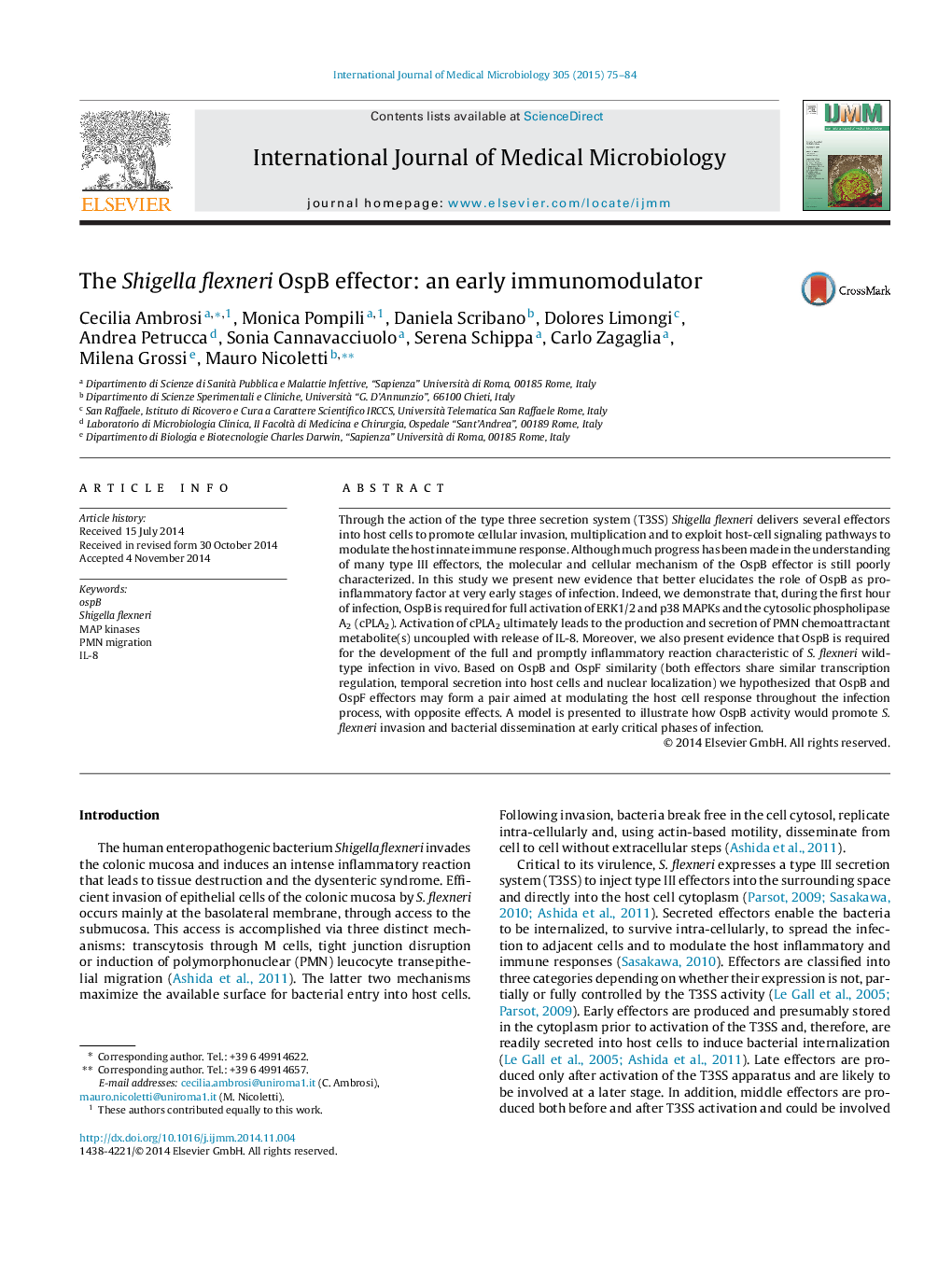| Article ID | Journal | Published Year | Pages | File Type |
|---|---|---|---|---|
| 8385335 | International Journal of Medical Microbiology | 2015 | 10 Pages |
Abstract
Through the action of the type three secretion system (T3SS) Shigella flexneri delivers several effectors into host cells to promote cellular invasion, multiplication and to exploit host-cell signaling pathways to modulate the host innate immune response. Although much progress has been made in the understanding of many type III effectors, the molecular and cellular mechanism of the OspB effector is still poorly characterized. In this study we present new evidence that better elucidates the role of OspB as pro-inflammatory factor at very early stages of infection. Indeed, we demonstrate that, during the first hour of infection, OspB is required for full activation of ERK1/2 and p38 MAPKs and the cytosolic phospholipase A2 (cPLA2). Activation of cPLA2 ultimately leads to the production and secretion of PMN chemoattractant metabolite(s) uncoupled with release of IL-8. Moreover, we also present evidence that OspB is required for the development of the full and promptly inflammatory reaction characteristic of S. flexneri wild-type infection in vivo. Based on OspB and OspF similarity (both effectors share similar transcription regulation, temporal secretion into host cells and nuclear localization) we hypothesized that OspB and OspF effectors may form a pair aimed at modulating the host cell response throughout the infection process, with opposite effects. A model is presented to illustrate how OspB activity would promote S. flexneri invasion and bacterial dissemination at early critical phases of infection.
Keywords
Related Topics
Life Sciences
Biochemistry, Genetics and Molecular Biology
Biochemistry, Genetics and Molecular Biology (General)
Authors
Cecilia Ambrosi, Monica Pompili, Daniela Scribano, Dolores Limongi, Andrea Petrucca, Sonia Cannavacciuolo, Serena Schippa, Carlo Zagaglia, Milena Grossi, Mauro Nicoletti,
